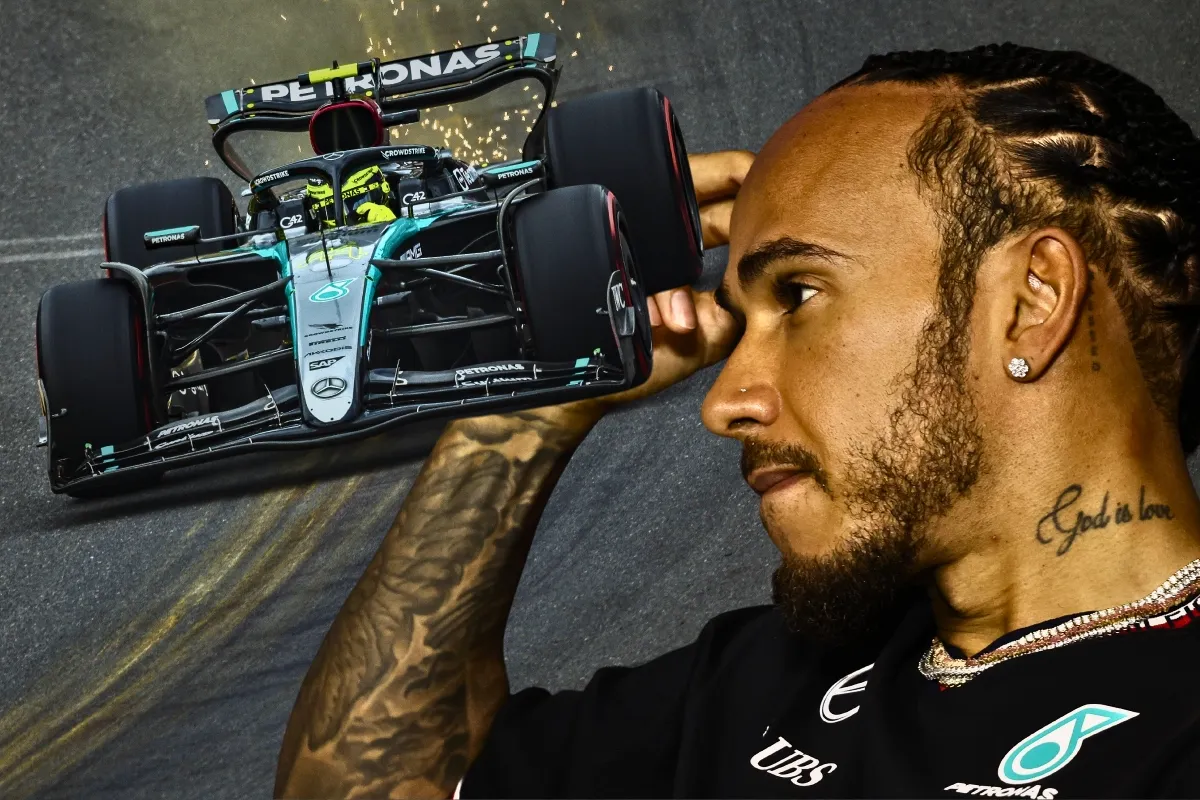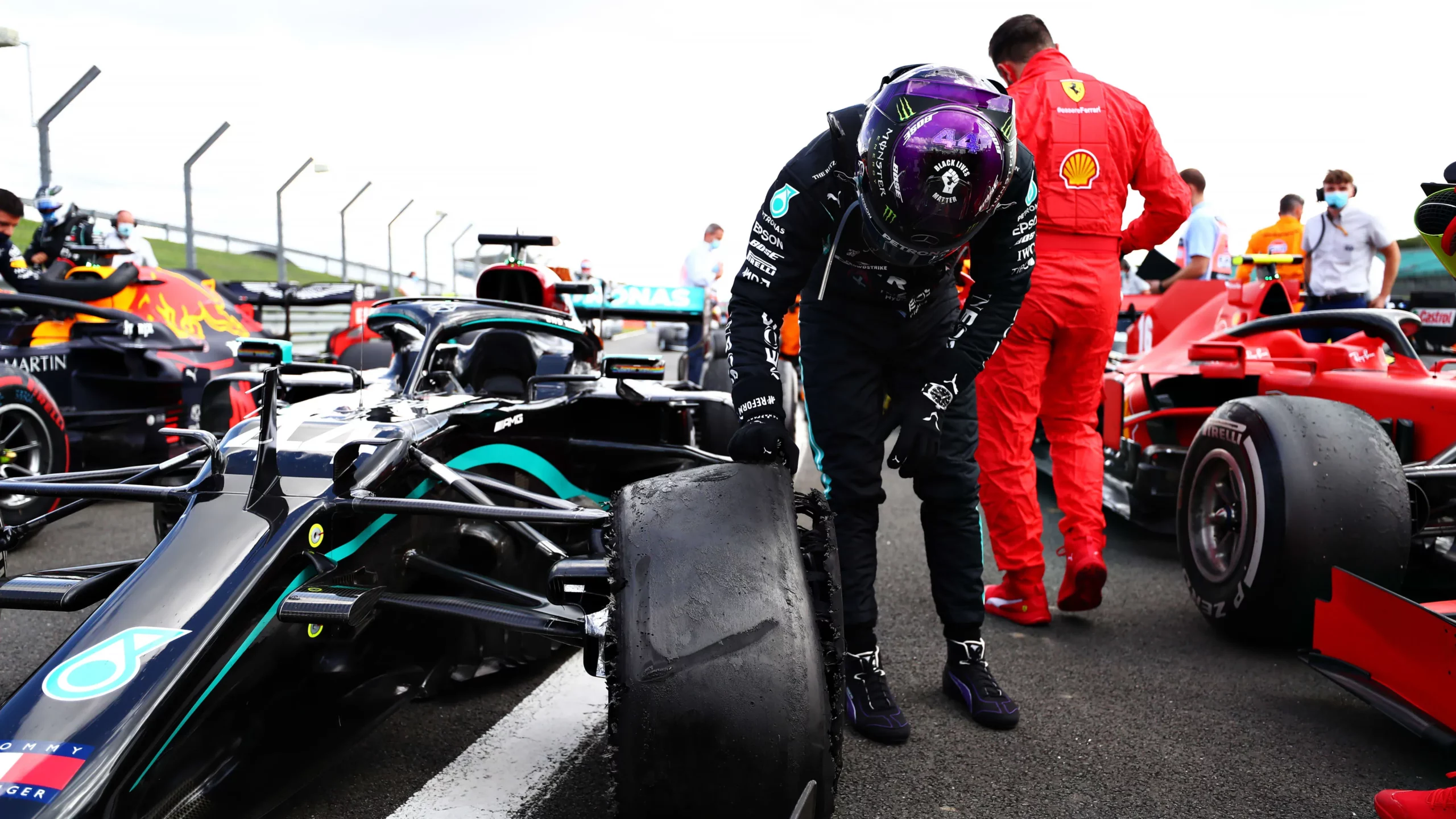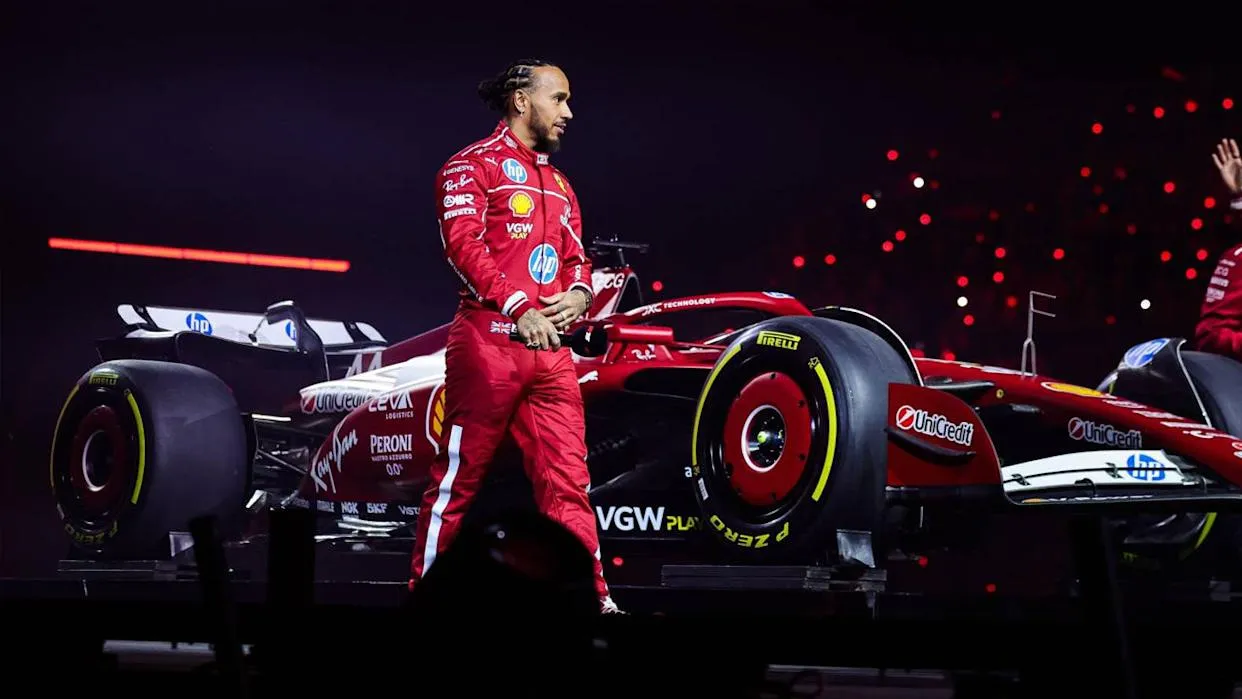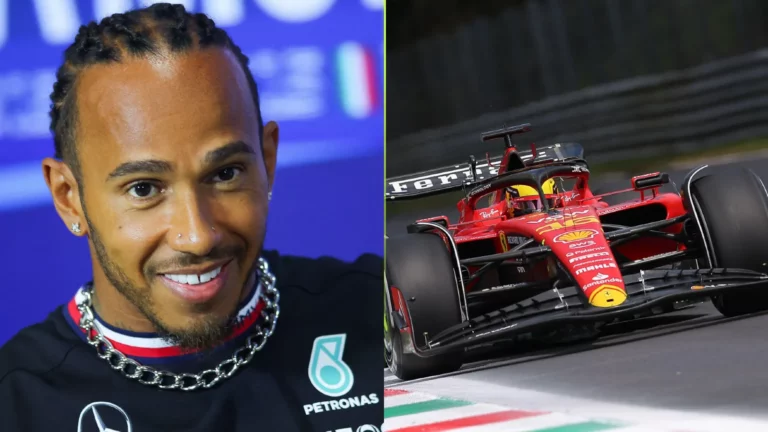In the adrenaline-fueled arena of Formula 1 racing, the boundary between reality and scripted drama has become increasingly blurred, with Netflix’s “Drive to Survive” often caught in the crossfire for its dramatic presentation of the sport. This controversy has recently escalated following the events at the 2025 Chinese Grand Prix involving seven-time world champion Sir Lewis Hamilton. The incident not only sparked debates about the authenticity of broadcasted content but also highlighted potential manipulations by Formula One Management (FOM) itself.

The Incident That Stirred the Pot
During the contentious race in Shanghai, an intriguing exchange between Hamilton and his race engineer, Ricciardo Adami, was broadcast to millions. The dialogue, centered around whether Hamilton should let his teammate Charles Leclerc pass him, seemed to paint Hamilton as obstinate and self-centered. Hamilton’s response to Adami’s instruction was to let Leclerc through “when he’s closer,” which at first came off as dismissive.
This exchange led to widespread speculation about Hamilton’s relationship with his engineer and was perceived as a moment of tension and ego clash. However, subsequent revelations suggest that the narrative fed to the public might not have been entirely accurate.
Behind the Scenes: Unveiling the Truth
Fred Vasseur, Ferrari’s team principal, and Hamilton himself later clarified that the initial communication to switch positions came from Hamilton, not from Adami. This piece of information was crucial yet omitted from the live broadcast. Vasseur expressed his frustrations, stating, “I think this is a joke from FOM because the first call came from Lewis. Lewis asked us to swap, but to make the show, to create the mess around the situation, they broadcast only the second part of the question.”
Hamilton also defended his conduct, emphasizing the polite nature of his request and his need for focus during the race. He compared his relatively mild conversation with the harsher exchanges other drivers have had, pointing out the selective attention his actions receive.

The Influence of ‘Drive to Survive’
The strategy of enhancing drama for entertainment value is not new in the realm of sports broadcasting, particularly with the influence of “Drive to Survive.” The series is known for its selective editing and narrative crafting, which, while successful in attracting viewers, often distorts the reality of the events it depicts. This approach by Netflix has been both praised for increasing the sport’s popularity and criticized for misrepresenting the personalities and dynamics within the sport.
Reflecting on FOM’s Role
The recent incidents raise questions about whether FOM has started adopting a similar tactic. By selectively broadcasting conversations and potentially taking them out of context, FOM could be seen as attempting to inject unnecessary drama into the races. This practice not only misleads fans but also affects the reputations of the drivers involved.

The Cost of Dramatization
As Formula 1 continues to grow in popularity, partly fueled by the dramatization from “Drive to Survive,” it is crucial to consider the impact of these portrayals on the sport’s integrity. The controversy surrounding Hamilton’s exchange during the Chinese GP serves as a reminder of the delicate balance between entertainment and authenticity. As fans, while we relish the drama, it is essential to remain aware of the narratives being shaped before us and seek the full context behind the sensational headlines.
